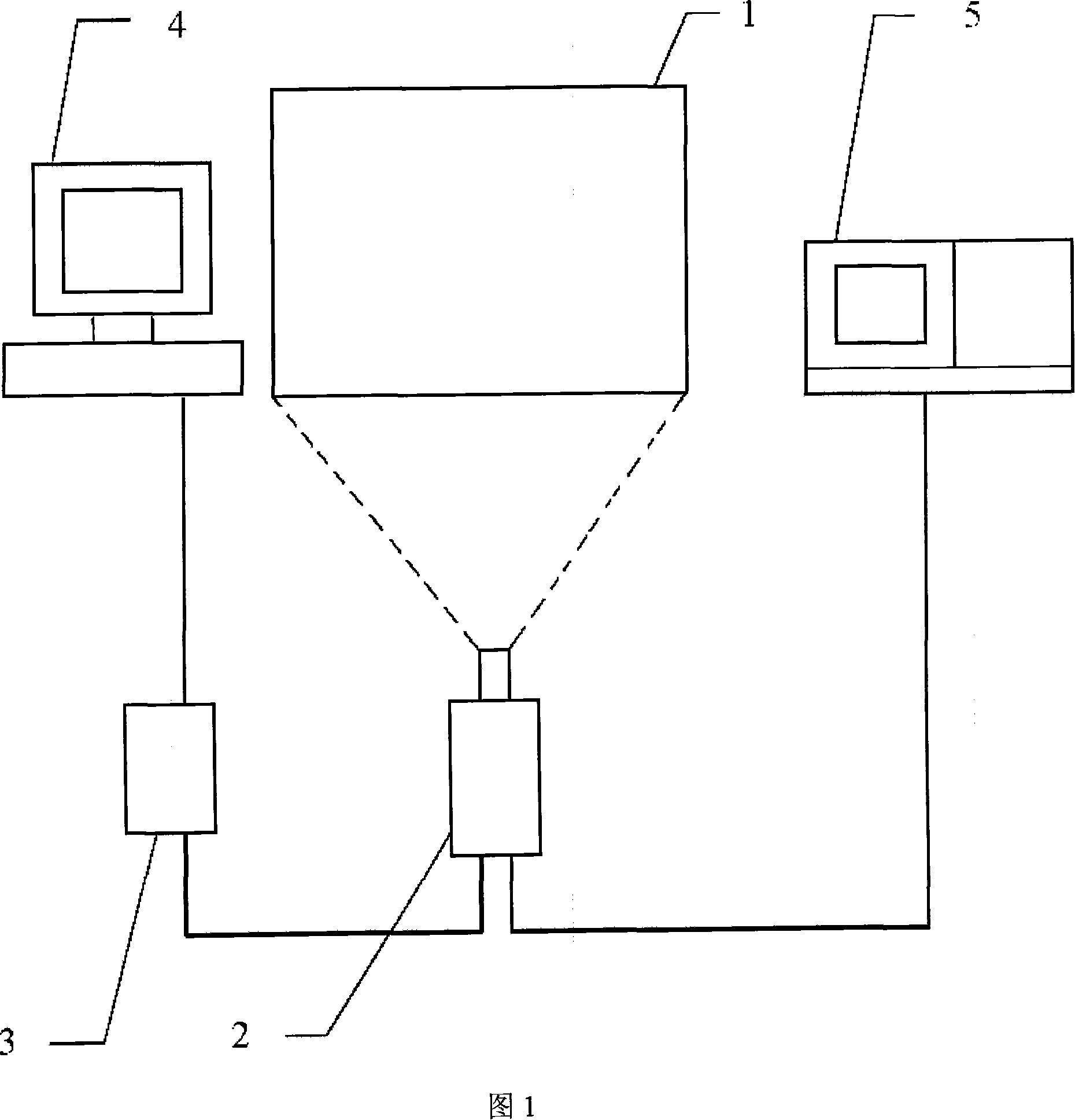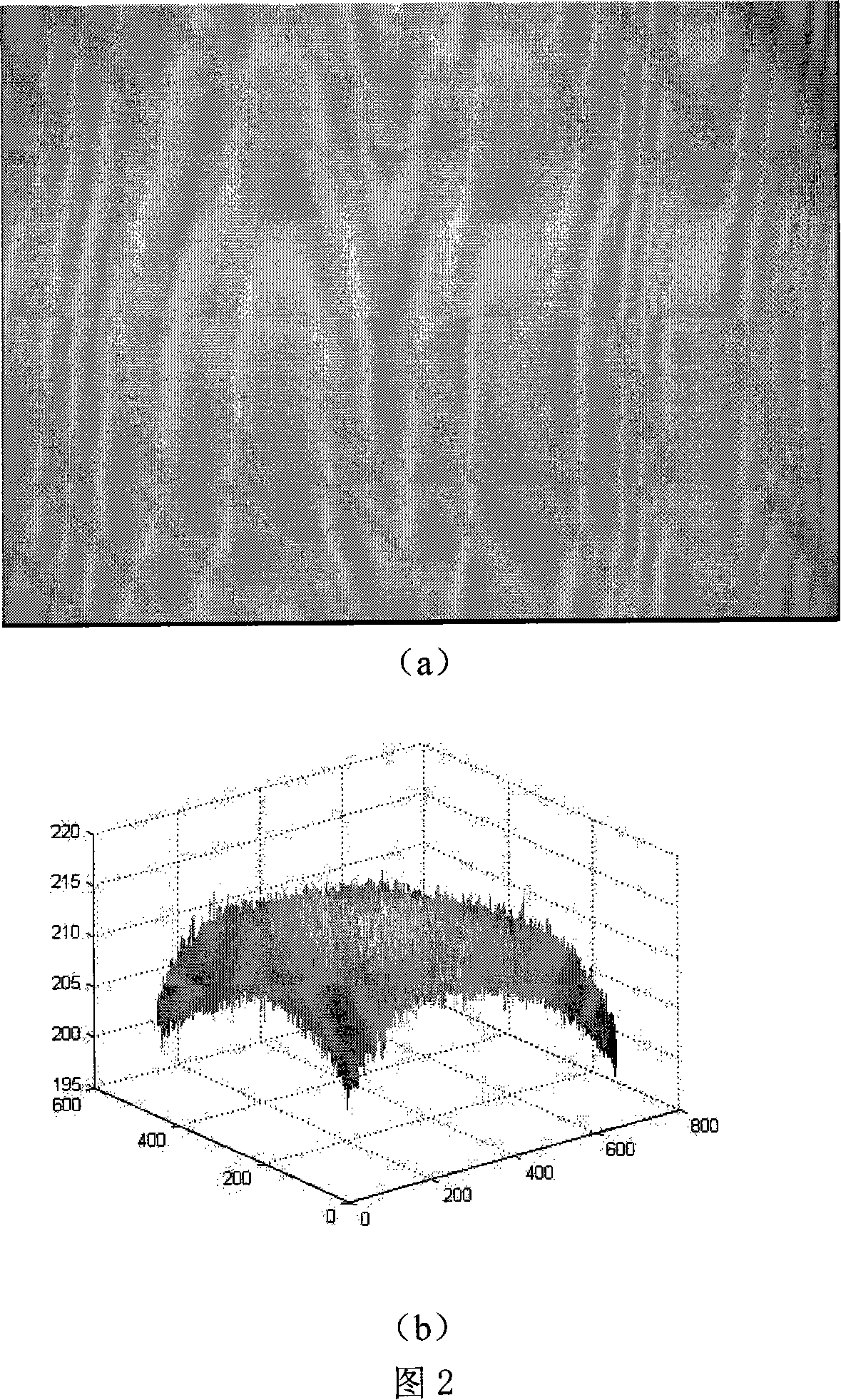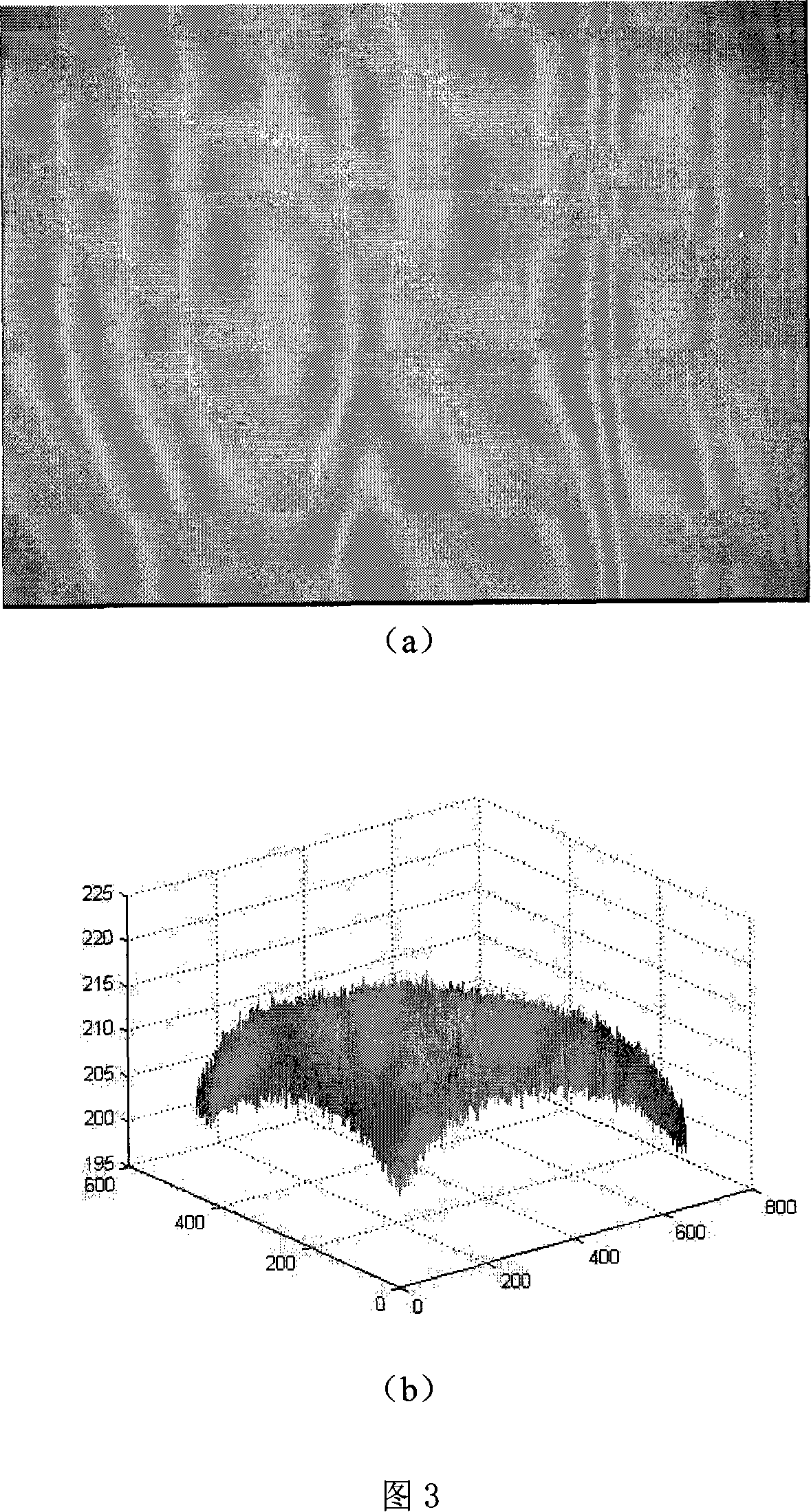Digitized test method for CCD camera signal-to-noise ratio
A test method and camera technology, applied in image communication, TV, color TV components, etc., can solve the problems of relying on the operator's subjective judgment ability, high test cost, etc., and achieve the effect of low-cost and accurate measurement
- Summary
- Abstract
- Description
- Claims
- Application Information
AI Technical Summary
Problems solved by technology
Method used
Image
Examples
Embodiment Construction
[0036] The present invention will be further described below in conjunction with drawings and embodiments. For the convenience of explanation, here is an example of an 8-bit image acquisition card:
[0037] As shown in Figure 1, the CCD camera signal-to-noise ratio digitization test system designed according to the present invention is mainly composed of parts such as a uniform lighting light box 1, a CCD camera 2 to be tested, an image acquisition card 3, a computer 4 and an oscilloscope 5 for auxiliary readings. .
[0038] The basic implementation process is as follows: the camera 2 shoots the uniformly illuminated transmissive target at the exit of the light box 1 , and the fluctuation in the imaging signal reflects the noise of the camera 2 . The video signal of the camera 2 is quantized into a digital image through the image acquisition card 3 and sent to the computer 4 for processing. A specially designed digital high-pass filter is used to separate the noise signal, a...
PUM
 Login to View More
Login to View More Abstract
Description
Claims
Application Information
 Login to View More
Login to View More - Generate Ideas
- Intellectual Property
- Life Sciences
- Materials
- Tech Scout
- Unparalleled Data Quality
- Higher Quality Content
- 60% Fewer Hallucinations
Browse by: Latest US Patents, China's latest patents, Technical Efficacy Thesaurus, Application Domain, Technology Topic, Popular Technical Reports.
© 2025 PatSnap. All rights reserved.Legal|Privacy policy|Modern Slavery Act Transparency Statement|Sitemap|About US| Contact US: help@patsnap.com



